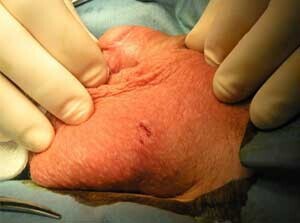The 'Snip' for Permanent contraception
A vasectomy is an excellent form of permanent contraception. Whilst a vasectomy can be reversed, you should consider this operation to be permanent, as the reversal is technically difficult, expensive, and by no means always successful.
Like any operation, there are complications associated with vasectomy and it is extremely important you are aware of these and accept the possibility that they may occur in your case. At Bay Urology, Tauranga, less than one in a hundred men would experience complications after their vasectomy procedure..
Anatomy
Sperm are made in the testis and travel via small muscular tubes called the vas deferens which enter the pelvis and pass behind the bladder and through the prostate gland to open just below the neck of the bladder.
When a man ejaculates the semen produced is made up of three components.
The majority of the fluid is produced by the seminal vesicles (approximately 60%)
Secretions from the prostate gland (approximately 30%)
The remaining 10% comprises sperm-rich fluid from the testicle delivered through the vas deferens
Warning: Photos further down the page
Procedure
The operation of vasectomy involves removing approximately 1-2 cm of the vas just above the testicle and sealing the two free ends by internal cauterisation. This prevents sperm from passing beyond this point. After all the sperm stored upstream in the vas deferens and seminal vesicles are used up, the semen will only comprise fluid only from the prostate and seminal vesicles. Because the sperm make up such a small percentage of the total volume a man does not usually notice any difference in his ejaculation after a vasectomy.
After a vasectomy, the testicle continues to make sperm which is stored in a structure attached to the testes, the epididymis. As sperm break down and are removed new sperm are produced to replace them.
We carry out the no-scalpel vasectomy avoiding the need to make incisions in the scrotum, which normally would have been closed with stitches.
Approximately one hour before your scheduled surgery time you should take a shower.
During this shower, you should thoroughly soap up your penis, scrotum, groin, and particularly around the anus, rinse off and repeat this procedure a total of three times. This will greatly reduce the bacterial count which could cause infection. Dry yourself with a clean towel and put on a clean pair of underpants.
On arrival at the surgery, the urologist will carry out a minor shave. The position of the vas is then marked out on each side, local anaesthetic cream is applied and covered with a dressing. The cream takes 20 minutes to become effective which means that you don't feel anything when we inject local anaesthetic under the skin at the start of the procedure.
The vas is maneuvered to just under the skin and held in position by a special clamp. The vas is then delivered through a tiny spit in the skin and the segment is removed. The two ends of the vas are then cauterised internally thereby sealing them off and reducing the chance of sperm leakage or rejoining. After carefully checking for any bleeding, the ends of the vas are released and they drop back into the scrotum. The tiny split is so small that no sutures are required and will heal over very quickly. It also means that recovery is more comfortable.
Overall you will be in the rooms for about 70 minutes. The operation itself takes about 20 minutes.
You are unable to drive after taking Valium and you need to arrange for someone to drive you home.
Complications
Infection
If an infection occurs in the cut you will notice this to be red, tender and possibly swollen and you will require antibiotics. By carrying out the pre-operative instructions involving a shower as described later, the chances of infection are extremely small.
Haematoma
Haematoma is the medical term for the collection of blood in the tissue. Following the vasectomy, some of the small thin-walled veins around the vas may start bleeding, although every care will be taken to seal these off during the procedure. Because the area is so elastic, quite a large blood clot can build up before the bleeding stops. If you are unfortunate enough to have a haematoma (the chances are less than 1%) you will probably require to take three or four days off work and rest up. The body will reabsorb the haematoma over a period of about 2 weeks and you will not be left with any long-term problems.
In addition, bleeding can occur into the skin layers itself which will leave a black-looking bruise, but this is painless and therefore of no consequence.
Bleeding can also occur from the cut itself, but this simply requires a dressing and usually stops within half an hour of surgery.
Fairly commonly there is some residual haematoma in the vas itself and this can cause blood to appear in the ejaculate. This always resolves and is of no consequence. (Though it can look alarming!)
Granuloma
This is another rare complication comprising of a lump of scar tissue that forms between the two cut ends of the vas and is usually about the size of a pea or small grape. It is usually a reaction to the sperm that have spilled out during the procedure into the tissues, and will only persist if there continues to be a sperm leak. In most cases, the granuloma disappears over a period of months, but very occasionally (<1%) a minor procedure is required to remove the granuloma and reseal off the vas.
Testicular Pain
Whilst it is normal (as you would expect) to have pain following this operation, this usually lasts only a few days and is a dull ache. However, many men experience occasional dull aches in their testicles, often just on one side or the other for many months or even a year following vasectomy. This pain is thought to be due to the congestion of the epididymis, the structure attached to the testis where the sperm is stored.
The majority of those men with post-vasectomy pain will not have long-term problems; occasionally (1 in 500), surgery is required to treat persistent pain.
Failure of the Operation…
Your wife or partner falls pregnant.
A Vasectomy is a very safe and effective procedure; the key is ensuring you get a sperm sample done 12 weeks after the procedure.
There are 2 reasons why pregnancy can occur;
Not using contraception in the danger period - until the 12-week sperm sample has been done.
The vas ends rejoin. A canal can develop between the two ends of the vas through which sperm can travel (re-canalisation). If this is going to occur it usually does so in the first few weeks after the operation. Therefore to avoid this unfortunate event you should undergo a sperm count approximately 12 weeks after the operation. If the sample shows that the vas ends have rejoined, then we would repeat the procedure at no cost. Currently, the risk of this happening at Bay Urology is 1 in 1000 cases. If your sperm sample is zero, you know that: you have used up all the stored sperm and the ends have not rejoined.
It is possible that the vas ends may rejoin years after the operation, but this is very rare.
Preparation for Surgery
You will have an appointment to see your urologist to give you the opportunity to discuss any aspects of the operation itself. You will have a brief examination and will be asked to sign a consent form. You will be given an appointment and some tablets for your pre-medication (Diazepam 10mg).
Approximately one hour before your scheduled surgery time you should take a shower. During this shower, you should thoroughly soap up your penis, scrotum, groin, and particularly around the anus, rinse off and repeat this procedure a total of three times. This will greatly reduce the bacterial count which could cause infection. Dry yourself with a clean towel and put on a clean pair of underpants. As soon as you are out of the shower take the Diazepam tablets and then sit down and relax until it is time to come into the rooms.
It is very important that you do not drive yourself to or from the surgery.
Following surgery, we will make the necessary arrangements for the post-operative sperm count.
Post-Operative
After your Vasectomy
You should go straight home after the operation and lie down for 4-6 hours. Use the Paracode tablets provided if you feel an ache developing as the local anaesthetic wears off and we recommend taking some before you go to sleep that night. The normal dose is 2 tablets, four hourly.
For the next 1-2 days, depending on the progress you should avoid exercise and lifting and you should return to normal activity over a period of days depending on how comfortable you feel.
In the event you are unfortunate enough to have a complication, you should phone our rooms and we will arrange to see you. On the whole, we do not make routine follow-up appointments, because it is so rare to have problems post-operatively. We recommend you take two days off from your normal employment, during which you should take it very easy. This is particularly important on the night of the surgery and the day following.
Avoid prolonged exposure to vibrating machinery for the following week. You can resume sexual intercourse as soon as you feel comfortable, but preferably not within 48 hours of surgery. You should use contraception until you have had a clear sperm count.
Your first sperm count should be 12 weeks post-operation. Semen should be collected, (by masturbation) in the container provided which should be delivered to the First Avenue main branch of Pathlab (Tauranga) within approximately one to one and a half hours. Be sure to also hand in the form.
If you live out of Tauranga check with your nearest laboratory about the best time to drop off the sample.
Please phone Bay Urology on 07 571 2288 for the results after two working days. If the sperm count is not clear you will need to repeat the test after four weeks.
Sperm Storage
If you have any doubt about the permanence of vasectomy, you may choose to store sperm in a sperm bank. You will need to sign various consent forms and in particular decide in advance what should happen to your sperm in the event you no longer wish it to be stored or in the event you died. The options are for the sperm to be destroyed or they can be made available for artificial insemination for infertile couples.
We normally utilise the services of Fertility Associates in Auckland or Hamilton, who charge for this service. They can be contacted:
in Auckland (09 520 9520) or
Hamilton (07 839 2603 for further information.







